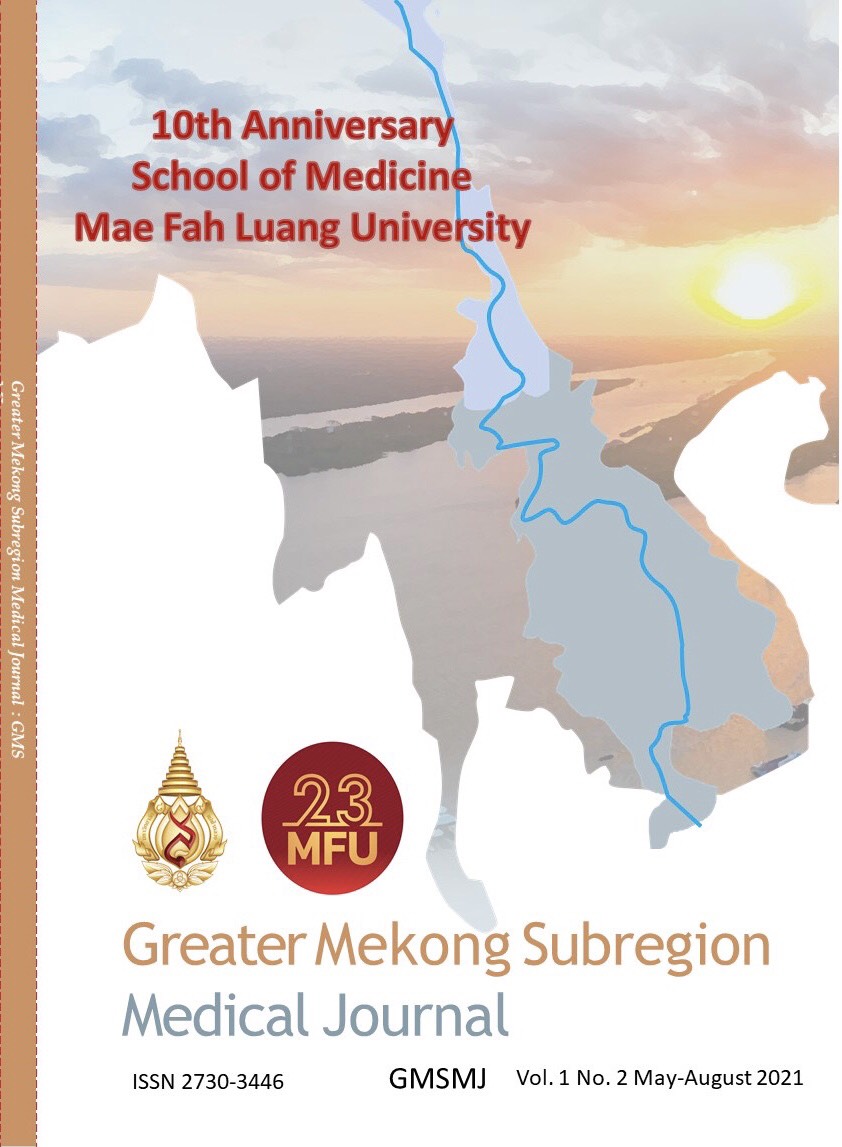Rehabilitation of Post-stroke Hemiplegic Patient with Integrative Medicine
Keywords:
Rehabilitation, Poststroke, Acupuncture, Thai traditional massageAbstract
Numerous of stroke survivors are suffering from the body function impairments such as problems with balance or coordination, weakness, and paralysis. We describe a case in which use of integrative medicine rehabilitation for a 52-year-old female patient with ischemic stroke suffered a right hemiplegia, resulting in persistent weakness and problems with muscle control. The patient underwent sequential three healing processes including physical therapy, Thai traditional massage, and acupuncture in total of 10 times, at 2 times per week by professional practitioners. After management with this rehabilitation program, the patient had better effects on stroke recovery evaluating by The Barthel index for activities of daily living, Mini-Mental Status Examination (MMSE) Thai 2002 and muscle power grading. The outcomes of the study evidence that comprehensive integrative medicinal rehabilitation approach has multiple effects on individuals who have poststroke disability or weakness to confer greater rehabilitative benefit.
References
World Health Organization. Regional Office for South-East A. WHO country cooperation strategy, Thailand: 2017– 2021. New Delhi: World Health Organization. Regional Office for South-East Asia; 2017 2017-05. Report No.:9789746804295 (Thai).
Nilanont Y, Nidhinandana S, Suwanwela NC, Hanchaiphiboolkul S, Pimpak T, Tatsanavivat P, et al. Quality of acute ischemic stroke care in Thailand: a prospective multicenter countrywide cohort study. J Stroke Cerebrovasc Dis 2014; 23 (2): 213-9.
Alan DL, Colin DM, Majid E, Dean TJ, Christopher JM. Global Burden of Disease and Risk Factors. New York: Oxford University Press; 2006.
Suwanwela NC. Stroke epidemiology in Thailand. Journal of stroke 2014; 16 (1):1-7.
Cioni G, Sgandurra G, Muzzini S, Paolicelli PB, Ferrari A. Forms of Hemiplegia. In: The Spastic Forms of Cerebral Palsy: A Guide to the Assessment of Adaptive Functions. Milano: Springer Milan; 2010. p. 331-56.
Fang J, Chen L, Ma R, Keeler CL, Shen L, Bao Y, et al. Comprehensive rehabilitation with integrative medicine for subacute stroke: A multicenter randomized controlled trial. Sci Rep 2016; 6: 25850.
Miyahara Y, Jitkritsadakul O, Sringean J, Aungkab N, Khongprasert S, Bhidayasiri R. Can therapeutic Thai massage improve upper limb muscle strength in Parkinson’s disease? An objective randomized-controlled trial. J Tradit Complement Med 2018; 8 (2): 261-6.
Chavez LM, Huang SS, MacDonald I, Lin JG, Lee YC, Chen YH. Mechanisms of Acupuncture Therapy in Ischemic Stroke Rehabilitation: A Literature Review of Basic Studies. Int J Mol Sci 2017; 18 (11): 2270-83
Hosseini Z-S, Peyrovi H, Gohari M. The Effect of Early Passive Range of Motion Exercise on Motor Function of People with Stroke: a Randomized Controlled Trial. Journal of caring sciences 2019; 8 (1): 39-44.
Khan NA, Yun L, Humphries K, Kapral M. Antihypertensive Drug Use and Adherence After Stroke. Stroke 2010; 41 (7): 1445-9.
Hatem SM, Saussez G, Della FailleM, Prist V, Zhang X, Dispa D, et al. Rehabilitation of Motor Function after Stroke: A Multiple Systematic Review Focused on Techniques to Stimulate Upper Extremity Recovery. Front Hum Neurosci 2016; 10: 442.
Abdul Rani AA, Ab Ghani RM, Shamsuddin S, Abdullah Z, Abdul Halim NH, Mustapha N, et al. Massage therapy for improving functional activity after stroke. Cochrane Database of Systematic Reviews 2015 (10).
Wiwanitkit V. Thai traditional massage: Issues causing possible adverse effects. Ancient science of life 2015; 35 (2): 122-3.
Chan MWC, Wu XY, Wu JCY, Wong SYS, Chung VCH. Safety of Acupuncture: Overview of Systematic Reviews. Scientific Reports 2017; 7 (1): 3369.






